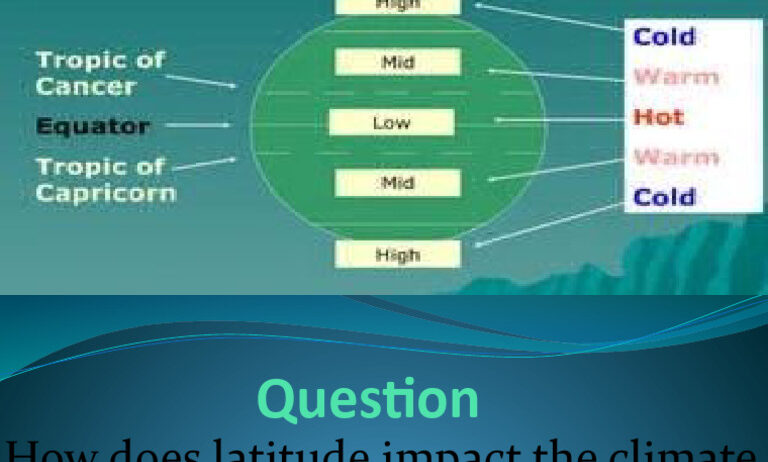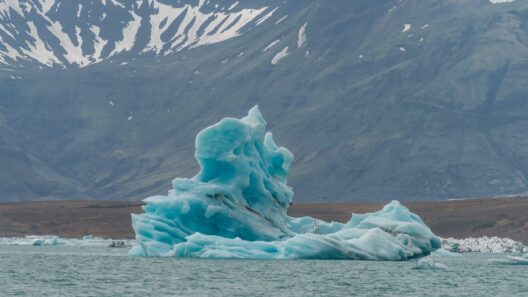Latitude serves as one of the foundational elements influencing climate patterns across our planet. Understanding how this geographical coordinate shapes climatic conditions can illuminate various environmental phenomena and their effects on ecosystems. From the scorching heat of the tropics to the frigid temperatures of polar regions, the interplay between latitude and climate is intricate and essential to grasp.
In the context of environmental activism, engaging with the nuances of climate patterns influenced by latitude is particularly vital. As we navigate the complexities of global warming, deforestation, and biodiversity loss, the latitudinal impact on climate becomes apparent in understanding regional vulnerabilities and strengths.
The Science of Latitude and Its Climatic Implications
Latitude is defined as the angular distance north or south of the equator, measured in degrees. This measurement fundamentally impacts the angle of sunlight that different regions receive throughout the year. The equator, situated at 0 degrees latitude, receives the maximum intensity of solar radiation due to its direct positioning relative to the sun. This results in warmer temperatures and a unique set of climatic conditions.
As one moves toward higher latitudes, specifically toward the poles, sunlight strikes the Earth at increasingly oblique angles. This phenomenon causes a reduction in solar energy per unit area, leading to lower average temperatures. For instance, regions such as Scandinavia, Canada, and Siberia experience harsh winters, with prolonged periods of darkness greatly influencing ecosystems and human activities.
Moreover, the distribution of solar energy impacts atmospheric circulation patterns, vital to understanding broader climate systems. The Coriolis effect, a result of the Earth’s rotation, combines with these latitudinal gradients to create prevailing winds that redistribute heat around the globe. This mechanism not only dictates temperature variations but also influences precipitation patterns, further intertwining latitude with climate dynamics.
The Tropical Zone: A Paradise of Heat and Humidity
Moving toward the tropics, regions located generally between 23.5 degrees north and south latitude showcase some of the most unique climate patterns. The climate here is characterized by consistently warm temperatures year-round, with minimal variation between seasons. This ceaseless warmth feeds into the development of lush rainforests and vibrant ecosystems, hosting an array of biodiversity that is unparalleled in colder climates.
However, this tropical paradise is not without vulnerability. The intense heat and humidity present in these zones create specific atmospheric conditions conducive to the formation of tropical storms and hurricanes. These climatic phenomena can produce devastating effects on local communities, agriculture, and natural habitats. Understanding the impact of latitude on tropical weather patterns is crucial for climate resilience and disaster preparedness in affected regions.
Moreover, the tropics also exemplify the impacts of climate change with increasing temperatures and shifting precipitation patterns. The susceptibility of tropical ecosystems to anthropogenic activities, such as deforestation and pollution, raises concerns about the sustainability of these climates. Protecting the delicate balance within these regions is paramount for both environmental health and human livelihoods.
Temperate Zones: A Blend of Extremes
Further from the equator, the temperate zones—located roughly between 23.5 to 66.5 degrees north and south latitude—are renowned for their seasonal variations. These regions experience a more pronounced distribution of sunlight throughout the year, leading to distinct seasonal changes.
Spring, summer, autumn, and winter each manifest unique climatic features: warm summers accommodate agricultural activities, while cold winters challenge local fauna and flora to adapt or endure harsh conditions. Such seasonal dynamics significantly impact human activities, from planting schedules to energy consumption levels.
Though temperate zones appear more balanced in their climate distributions, they are not immune to extreme weather events exacerbated by climate change. Unseasonal temperatures, prolonged droughts, and increased storm frequency symbolize the unpredictable nature of our shifting atmosphere. Latitudinal effects combined with these anomalies create a pressing need for adaptive strategies in agriculture, urban planning, and natural resource management.
The Polar Regions: Cold Desolation and Climate Sensitivity
The polar regions, encompassing areas above 66.5 degrees north and south latitude, provide a stark contrast to the tropical and temperate zones. Characterized by frigid temperatures and minimal sunlight for extended periods, these areas hold unique ecosystems adapted to extreme conditions. The Arctic and Antarctic serve as critical indicators of climate health, often referred to as “canaries in the coal mine.” Their sensitivity to temperature fluctuations signals broader environmental changes affecting global climate.
The melting ice caps and glaciers in these regions not only threaten local habitats but also have far-reaching implications for global sea levels. As ice melts, global temperature dynamics shift, impacting ocean currents and weather patterns worldwide. This interconnectedness underscores the importance of understanding latitude’s role in climate phenomena, particularly regarding global environmental stability.
In conclusion, latitude plays a pivotal role in shaping climate patterns across diverse regions. From the humid tropics to the frigid poles, the geographical positioning of an area dictates its thermal and atmospheric conditions, influencing ecosystems and human societies alike. As climate challenges evolve, a deep comprehension of these latitudinal effects can foster informed dialogue and actionable strategies for climate leadership and sustainability. It is incumbent upon us to recognize and respond to the intricate web of climate patterns linked to geography, striving for a balanced coexistence with the environment we inhabit.








